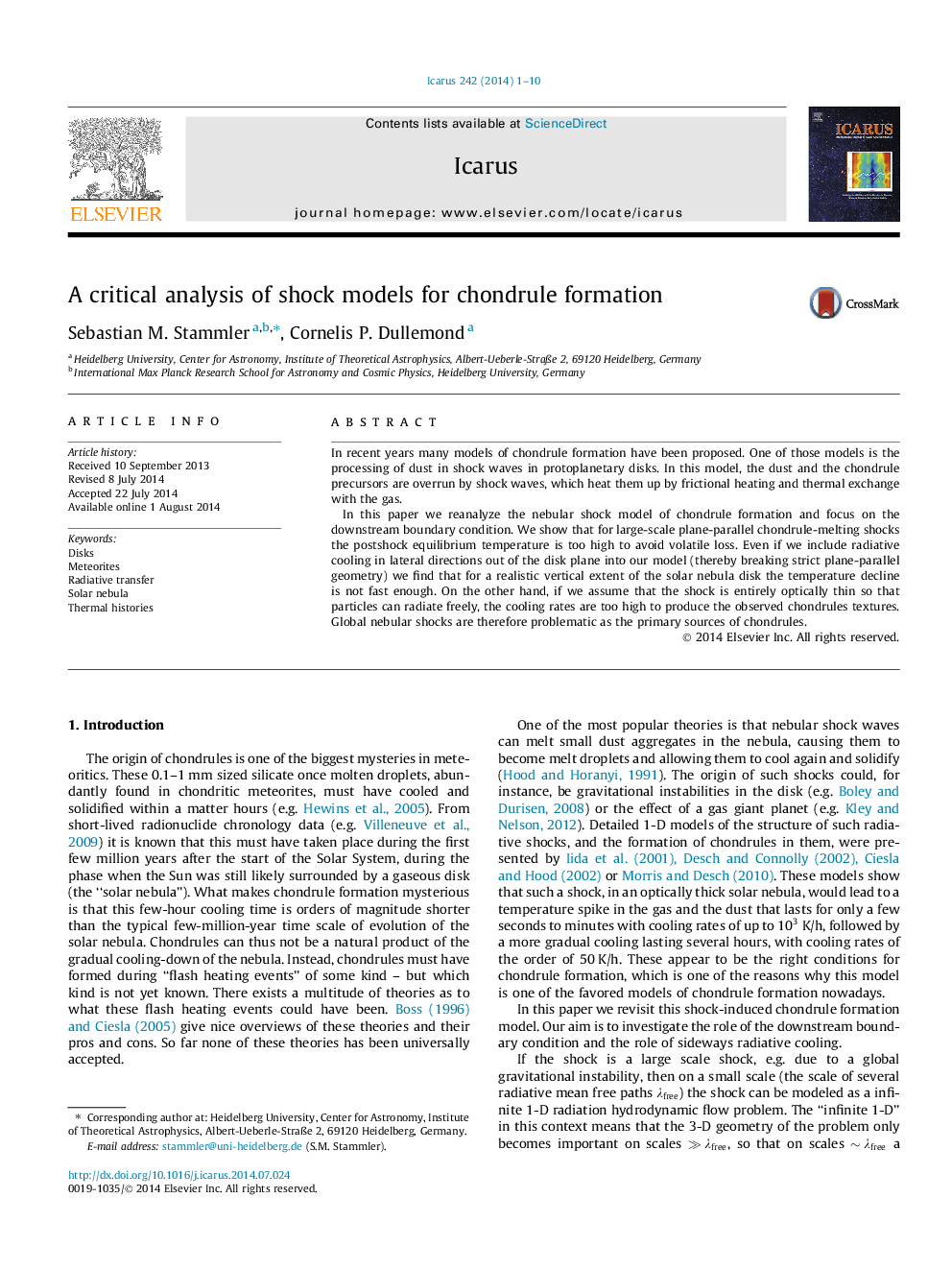| Article ID | Journal | Published Year | Pages | File Type |
|---|---|---|---|---|
| 8137583 | Icarus | 2014 | 10 Pages |
Abstract
In this paper we reanalyze the nebular shock model of chondrule formation and focus on the downstream boundary condition. We show that for large-scale plane-parallel chondrule-melting shocks the postshock equilibrium temperature is too high to avoid volatile loss. Even if we include radiative cooling in lateral directions out of the disk plane into our model (thereby breaking strict plane-parallel geometry) we find that for a realistic vertical extent of the solar nebula disk the temperature decline is not fast enough. On the other hand, if we assume that the shock is entirely optically thin so that particles can radiate freely, the cooling rates are too high to produce the observed chondrules textures. Global nebular shocks are therefore problematic as the primary sources of chondrules.
Related Topics
Physical Sciences and Engineering
Earth and Planetary Sciences
Space and Planetary Science
Authors
Sebastian M. Stammler, Cornelis P. Dullemond,
